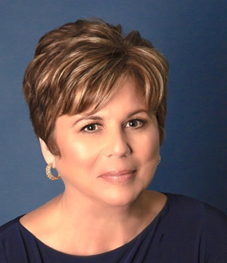One Thing That Every Executive Should Know About Succeeding With Talent
In thirty years of working in the Talent arena, I have learned a very important lesson about succeeding with and through talent. It’s a similar lesson that most executives already know about vision and business strategies. If they have a particular vision for their organization, they need to ensure that everything they do aligns to that vision. Strategic objectives should move the company closer to the vision. Structure and organizational processes should propel the vision rather than impede it. People should be selected, developed, and rewarded based upon the “fit” with that vision. It all goes back decades ago to McKinsey’s tried and true 7-S model.
McKinsey’s 7-S model is a business framework (there are numerous variations to the original now) that organizations use to facilitate alignment across all they do. As a very renowned business framework, most leaders are exposed to it at some point or another and understand its value.
When it gets to the concepts of aligning talent to the vision and strategic objectives, many leaders have ongoing questions about how to make that possible. It used to be that the talk about aligning talent or Strategic Talent Management centered around competency frameworks. But, executives often hated the term “competency” framework, and because it felt too “HR-y” to leaders, they stopped listening beyond hearing the term. Today, the talk does not center around competency frameworks but rather around capability frameworks or skill taxonomies. Leaders question the distinctions, which they should use or shouldn’t, and how to make any framework, regardless of the name, work for the organization.
So, McKinsey’s 7-S model has stood the test of time as one of the business classics. In the talent world, another concept has also stood the test of time. Decades ago, when competency frameworks were being developed by many of the world’s leading organizations, they were organizing these frameworks around four primary factors. This began largely from the work of Personnel Decisions International (PDI), which built their renowned framework around four broad factors. Today, most major consulting firms use some variation of this factor structure for their leadership frameworks, 360 assessments, and otherwise.
The factor structure developed decades ago was genius. It stood the test of time. It continues to be relevant today.
The four-factor structure (also referred to by terms such as Leadership Competency Architecture or Enterprise Competency Architecture) introduced originally by PDI and still hugely relevant today, consists of four factors (with variations in the language used):
- Thought Leadership – competencies/capabilities/skills such as Strategic Thinking or Seasoned Judgment or Decision-Making, which vary a bit in terms of the titles and definitions from level to level in the organization
- Results Leadership – competencies/capabilities/skills such as Accountability, or Continuous Improvement, again varying a bit in terms of titles and definitions from level to level in the organization
- People Leadership - competencies/capabilities/skills such as Coaching and Developing People, or Communication, again varying a bit in terms of titles and definitions from level to level in the organization
- Personal/Self Leadership - competencies/capabilities/skills such as Self Awareness or Growth Orientation, again varying a bit in terms of titles and definitions from level to level in the organization
Organizations that also wanted to document functional (specific to a function such as HR or IT) competencies/capabilities/skills could add a fifth factor of Functional Leadership. This factor would include competencies/capabilities/skills particular to specific functions.
The genius of this factor structure is that:
- Everything fits within it – if you try to think of competencies/capabilities/skills that do not fit, you can’t
- People can easily understand it and apply its language in many forums across the organization - I have sat in many succession meetings in which the conversation was easily presented and understood using these four factors (e.g., “Bob is really strong in Thought Leadership, but weak in People Leadership. That’s what he has to improve if he wants to move up.”)
- It is the foundation for aligning all talent processes (recruitment/selection, performance and succession management, development, etc.) across the organization, ensuring the company builds the bench strength it needs
- It can be so easily customized to ring true to any organization (through the competencies/capabilities/skills included and the language used)
- When originally developed, the framework was meant to be a “competency” framework, but today companies can think of it all-encompassing, including competencies, capabilities, and skills
The primary message of this article is if you need to better align your workforce or build a stronger workforce, start with this structure for aligning your needs. Use your company’s language to make it your own. For example, maybe Innovation or Industry Leadership works better than Thought Leadership for your company. If digital capabilities are key to your strategy, this capability can be included in your framework. You can also have career paths that are aligned with digital excellence, in addition to traditional hierarchical career paths.
In addition to the factors, make the competencies/capabilities/skills you are trying to build strategically fit your organization. Considering competencies, capabilities, and skills in aligning talent is not an “either/or” equation, but rather an “and” equation. If the terminology of “competency” doesn’t work for the organization, call it something else. After all, competencies are the knowledge, skills, abilities, and other characteristics needed for success in a role or organization.
Finally, add a fifth factor of Technical or Functional Leadership to capture all of the important Functional or Technical competencies, capabilities, and skills that need to be fostered. The fifth factor is not considered “core” in that the talent needs defined do not cut across the organization. Rather, they are typically specific to functions, such as HR or IT. Here, you can have important HR capabilities or skills defined. You can create HR, IT, or other academies for development.
It is difficult to understand why, despite so much evidence to the contrary, all leaders do not rush to create a talent framework connected to their talent strategy that builds exactly the type of talent needed for their organization. It is not an HR concept. It is a concept well understand by business strategy experts for decades.
The concepts today of building skills taxonomies and academies for building functional and technical skills were very much born out of the platforms and applications which were designed to use skills and capabilities at the foundation. Skills taxonomies could be presented. Companies could select which skills are important. They could also create on-line learning libraries connected to these skills. Companies could also indicate what skills are required for various roles, people could indicate what skills they have, and the two could be matched to allow for career opportunities. On-line academies could be created for learning all of a function’s critical capabilities and skills. There are many good things that can be accomplished with talent platforms and applications. These platforms and applications should not guide a company’s talent strategy and processes, however. A strong talent framework does that, and the platforms can then support that framework.
So, if you haven’t done so already, take the step to get a single strong talent framework in place (you don’t need multiples, and multiples really defeat the purpose), and then use it (connect all of your talent processes to it). Measure results and see what happens. Depending on your talent framework, you will be able to improve diversity and inclusion, engagement, leadership, retention, functionally specific skills and capabilities, digital excellence, and so much more.
If you need a strong talent framework and aren’t sure how to get there, contact us at www.assessmentsinternationalinc.com.



